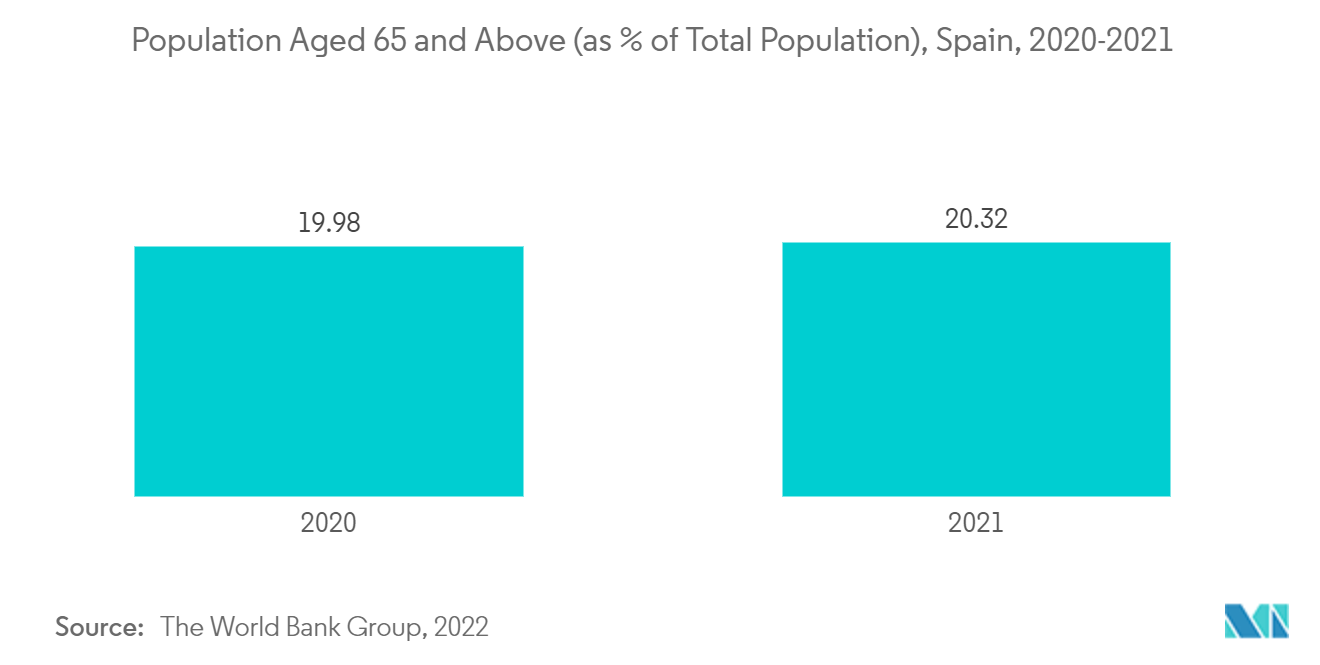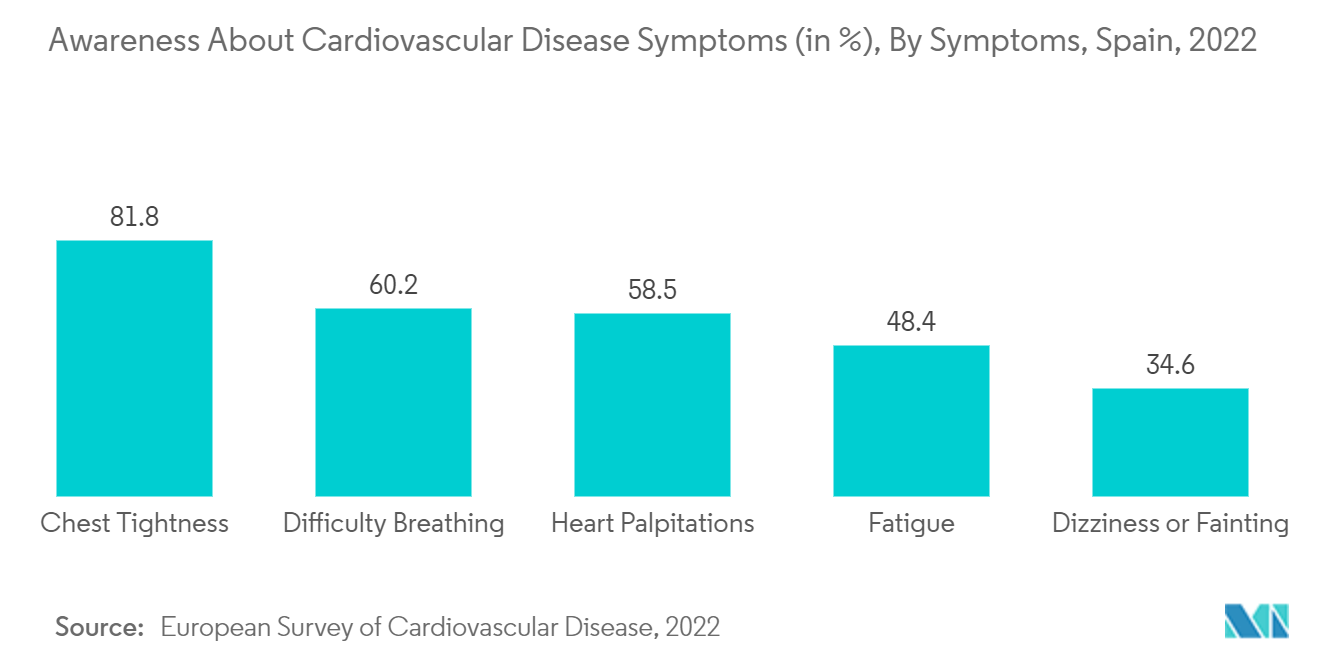Market Trends of Spain Cardiovascular Devices Industry
This section covers the major market trends shaping the Spain Cardiovascular Devices Market according to our research experts:
Electrocardiogram (ECG) is Expected to Hold a Significant Share of the Market Over the Forecast Period
Electrocardiography (ECG) is the process of producing an electrocardiogram of the electrical activity of the heart. These electrodes detect the small electrical changes that result from cardiac muscle depolarization followed by repolarization during each cardiac cycle. Changes in the typical ECG pattern occur in numerous cardiac abnormalities, including cardiac rhythm disturbances (such as atrial fibrillation and ventricular tachycardia), inadequate coronary artery blood flow (such as myocardial ischemia and myocardial infarction), and electrolyte disturbances (such as hypokalemia and hyperkalemia).
According to an article published by NCBI in June 2022, an electrocardiogram can be used to detect various cardiovascular diseases, such as myocardial injury and ischemia, and to check the presence of prior infarction, cardiopulmonary resuscitation, and rheumatic heart disease, among others. Hence, the increasing disease-detecting capabilities of electrocardiograms are expected to drive segment growth.
Moreover, the increasing geriatric population is also expected to aid in market growth. For instance, In January 2022, according to WHO, the population over 65 years in Spain amounted to 9.54 million people, thus continuing the upward trend witnessed in previous years. Between 2002 and 2022, the elderly population increased by more than two million. Thus, the increasing geriatric population is adding to the number of people susceptible to cardiovascular diseases, which are responsible for the growth of the studied market.

Remote Cardiac Monitoring is Expected to Hold a Significant Share of the Market Over the Forecast Period
The major factors driving the growth of the segment are the increasing prevalence of cardiac diseases, increasing adoption of remote cardiac monitoring systems, and advancement in the field of cardiac monitoring.
Increasing adoption of remote cardiac monitoring is a major factor driving the growth of the segment. For instance, according to the 2021 recommendations by the European Society of Cardiology, remote cardiac monitoring was recommended to reduce the number of in-office follow-ups in patients with pacemakers who have difficulties attending in-office visits (e.g., due to reduced mobility or other commitments or according to patient preference). Remote cardiac monitoring is also recommended in case a device component has been recalled or is on advisory to enable early detection of actionable events in patients, particularly those at increased risk (e.g., in case of pacemaker dependency).
Furthermore, the latest advancements in remote cardiac monitoring and patient awareness about the symptoms of cardiovascular diseases are also driving the segment's growth. Thus, due to the aforementioned factors, the remote cardiac monitoring segment is expected to experience growth during the forecast period.


